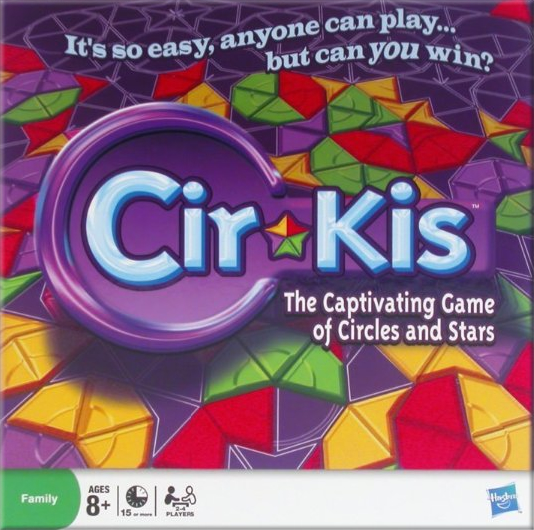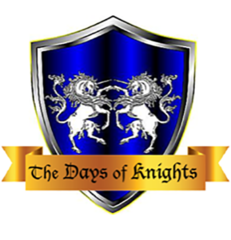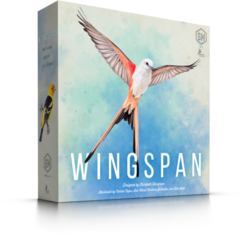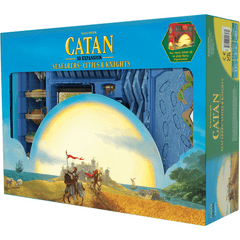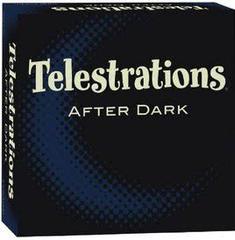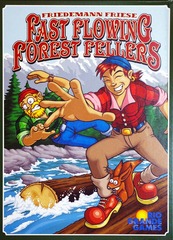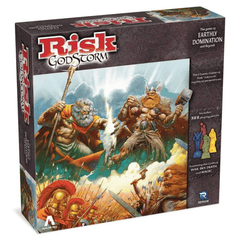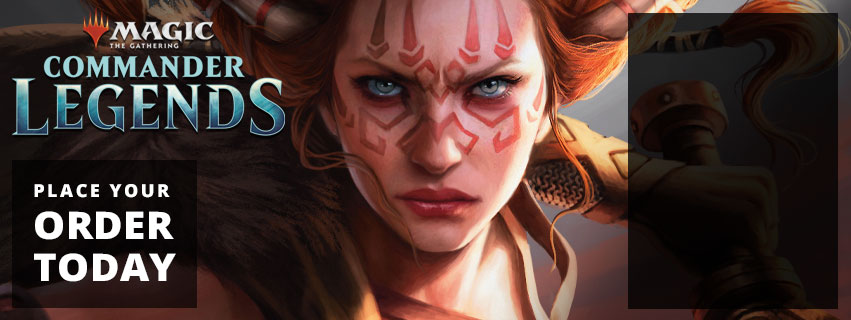[{"children":[{"parent_id":8833,"name":"Card Games","path":"/catalog/board__card_games-card_games/11793","photo_url":"","id":11793},{"children":[{"parent_id":11823,"name":"Mavel Champions","path":"/catalog/board__card_games-deck_building_games-mavel_champions/13720","photo_url":"","id":13720},{"parent_id":11823,"name":"Dominon","path":"/catalog/board__card_games-deck_building_games-dominon/13734","photo_url":"","id":13734}],"parent_id":8833,"name":"Deck Building Games","path":"/catalog/board__card_games-deck_building_games/11823","photo_url":"","id":11823},{"parent_id":8833,"name":"Cooperative","path":"/catalog/board__card_games-cooperative/11843","photo_url":"","id":11843},{"parent_id":8833,"name":"Family (8+)","path":"/catalog/board__card_games-family_8/11773","photo_url":"","id":11773},{"parent_id":8833,"name":"Kids (3+)","path":"/catalog/board__card_games-kids_3/11833","photo_url":"","id":11833},{"parent_id":8833,"name":"Chess & Abstract Games","path":"/catalog/board__card_games-chess__abstract_games/10753","photo_url":"","id":10753},{"parent_id":8833,"name":"War Games","path":"/catalog/board__card_games-war_games/8953","photo_url":"","id":8953},{"parent_id":8833,"name":"Out-of-Print Strategy","path":"/catalog/board__card_games-outofprint_strategy_game/8923","photo_url":"","id":8923},{"parent_id":8833,"name":"Out-of-Print War","path":"/catalog/board__card_games-outofprint_war/11813","photo_url":"","id":11813},{"children":[{"parent_id":11783,"name":"Catan","path":"/catalog/board__card_games-strategy-catan/13742","photo_url":"","id":13742}],"parent_id":8833,"name":"Strategy","path":"/catalog/board__card_games-strategy/11783","photo_url":"","id":11783}],"parent_id":1,"name":"Board & Card Games","path":"/catalog/board__card_games/8833","photo_url":"","id":8833},{"children":[{"parent_id":12,"name":"MTG Sealed Products","path":"/catalog/magic_the_gathering-magic_sealed_products/12913","photo_url":"","id":12913}],"parent_id":1,"name":"Magic The Gathering","path":"/catalog/magic_the_gathering/12","photo_url":"","id":12},{"children":[{"parent_id":13033,"name":"Pokemon","path":"/catalog/collectible_card_games-pokemon/11613","photo_url":"","id":11613},{"parent_id":13033,"name":"Yu-Gi-Oh","path":"/catalog/collectible_card_games-yugioh/11603","photo_url":"","id":11603},{"parent_id":13033,"name":"Star Wars Unlimited","path":"/catalog/collectible_card_games-star_wars_unlimited/13865","photo_url":"","id":13865},{"parent_id":13033,"name":"Disney Lorcana","path":"/catalog/collectible_card_games-disney_lorcana/13820","photo_url":"","id":13820},{"parent_id":13033,"name":"One Piece","path":"/catalog/one_piece/13855","photo_url":"","id":13855},{"parent_id":13033,"name":"Keyforge","path":"/catalog/collectible_card_games-keyforge/13741","photo_url":"","id":13741},{"parent_id":13033,"name":"Pokemon Plushes","path":"/catalog/collectible_card_games-pokemon_plushes/13706","photo_url":"","id":13706},{"parent_id":13033,"name":"Out-of-Print CCGs","path":"/catalog/collectible_card_games-outofprint_ccgs/11913","photo_url":"","id":11913},{"parent_id":13033,"name":"Other CCGs","path":"/catalog/collectible_card_games-other_ccgs/13553","photo_url":"","id":13553}],"parent_id":1,"name":"Collectible Card Games","path":"/catalog/collectible_card_games/13033","photo_url":"","id":13033},{"children":[{"parent_id":2112,"name":"D&D Pre-Order","path":"/catalog/dungeons__dragons-dd_preorder/13729","photo_url":"","id":13729},{"parent_id":2112,"name":"D&D 5E/2024","path":"/catalog/dungeons__dragons-dd_5e2024/12043","photo_url":"","id":12043},{"children":[{"parent_id":2122,"name":"D&D Classic Core & Sourcebks","path":"/catalog/dungeons__dragons-dd_classic_tsr_pre1980-dd_classic_core__sourcebks/2192","photo_url":"","id":2192},{"parent_id":2122,"name":"D&D Classic Adventures","path":"/catalog/dungeons__dragons-dd_classic_tsr_pre1980-dd_classic_adventures/2172","photo_url":"","id":2172}],"parent_id":2112,"name":"D&D Classic TSR pre-1980","path":"/catalog/dungeons__dragons-dd_classic_tsr_pre1980/2122","photo_url":"","id":2122},{"children":[{"parent_id":13716,"name":"AD&D Core and Sourcebooks","path":"/catalog/dungeons__dragons-add_1st_ed-add_core_and_sourcebooks/13718","photo_url":"","id":13718},{"parent_id":13716,"name":"AD&D Adventures","path":"/catalog/dungeons__dragons-add_1st_ed-add_adventures/13719","photo_url":"","id":13719}],"parent_id":2112,"name":"AD&D 1st Ed","path":"/catalog/dungeons__dragons-add_1st_ed/13716","photo_url":"","id":13716},{"children":[{"parent_id":2142,"name":"AD&D(2e) Core & Source Books","path":"/catalog/dungeons__dragons-add_2e-add2e_core__source_books/12173","photo_url":"","id":12173},{"parent_id":2142,"name":"AD&D(2e) Adventures","path":"/catalog/dungeons__dragons-add_2e-add2e_adventures/2272","photo_url":"","id":2272}],"parent_id":2112,"name":"AD&D 2E","path":"/catalog/dungeons__dragons-add_2e/2142","photo_url":"","id":2142},{"parent_id":2112,"name":"D&D 3/3.5E","path":"/catalog/dungeons__dragons-dd_335e/12153","photo_url":"","id":12153},{"parent_id":2112,"name":"D&D 4E","path":"/catalog/dungeons__dragons-dd_4e/12033","photo_url":"","id":12033},{"children":[{"parent_id":12053,"name":"Forgotten Realms","path":"/catalog/dungeons__dragons-dd_campaign_settings-forgotten_realms/12063","photo_url":"","id":12063},{"parent_id":12053,"name":"Greyhawk","path":"/catalog/dungeons__dragons-dd_campaign_settings-greyhawk/12073","photo_url":"","id":12073},{"parent_id":12053,"name":"Dragonlance","path":"/catalog/dungeons__dragons-dd_campaign_settings-dragonlance/12083","photo_url":"","id":12083},{"parent_id":12053,"name":"Dark Sun","path":"/catalog/dungeons__dragons-dd_campaign_settings-dark_sun/12093","photo_url":"","id":12093},{"parent_id":12053,"name":"Ravenloft","path":"/catalog/dungeons__dragons-dd_campaign_settings-ravenloft/12103","photo_url":"","id":12103},{"parent_id":12053,"name":"Al-Qadim","path":"/catalog/dungeons__dragons-dd_campaign_settings-alqadim/12113","photo_url":"","id":12113},{"parent_id":12053,"name":"Eberron","path":"/catalog/dungeons__dragons-dd_campaign_settings-eberron/12123","photo_url":"","id":12123},{"parent_id":12053,"name":"Mystara","path":"/catalog/dungeons__dragons-dd_campaign_settings-mystara/13683","photo_url":"","id":13683},{"parent_id":12053,"name":"Spelljammer","path":"/catalog/dungeons__dragons-dd_campaign_settings-spelljammer/13713","photo_url":"","id":13713},{"parent_id":12053,"name":"Birthright","path":"/catalog/dungeons__dragons-dd_campaign_settings-birthright/13714","photo_url":"","id":13714},{"parent_id":12053,"name":"Other Settings","path":"/catalog/dungeons__dragons-dd_campaign_settings-other_settings/12133","photo_url":"","id":12133},{"parent_id":12053,"name":"Planescape","path":"/catalog/dungeons__dragons-dd_campaign_settings-planescape/13715","photo_url":"","id":13715}],"parent_id":2112,"name":"D&D Campaign Settings","path":"/catalog/dungeons__dragons-dd_campaign_settings/12053","photo_url":"","id":12053},{"parent_id":2112,"name":"Planescape AD&D","path":"/catalog/dungeons__dragons-planescape_add/13503","photo_url":"","id":13503},{"parent_id":2112,"name":"D&D Accessories","path":"/catalog/dungeons__dragons-dd_accessories/11653","photo_url":"","id":11653},{"parent_id":2112,"name":"More D&D","path":"/catalog/dungeons__dragons-more_dd/2322","photo_url":"","id":2322}],"parent_id":1,"name":"Dungeons & Dragons","path":"/catalog/dungeons__dragons/2112","photo_url":"","id":2112},{"children":[{"children":[{"parent_id":2352,"name":"Pathfinder Core","path":"/catalog/rpg_tabletop_games-pathfinder-pathfinder_core/12893","photo_url":"","id":12893},{"parent_id":2352,"name":"PF Player Companions","path":"/catalog/rpg_tabletop_games-pathfinder-pf_player_companions/12903","photo_url":"","id":12903},{"parent_id":2352,"name":"PF Adventure Paths","path":"/catalog/rpg_roleplaying-pathfinder-pf_adventure_paths/2362","photo_url":"","id":2362},{"parent_id":2352,"name":"PF Campaign Settings","path":"/catalog/rpg_roleplaying-pathfinder-pf_campaign_settings/2372","photo_url":"","id":2372},{"parent_id":2352,"name":"PF Accessories","path":"/catalog/rpg_tabletop_games-pathfinder-pf_accessories/12873","photo_url":"","id":12873},{"parent_id":2352,"name":"Pathfinder 2E","path":"/catalog/rpg_roleplaying-pathfinder-pathfinder_2e/13711","photo_url":"","id":13711}],"parent_id":8623,"name":"Pathfinder","path":"/catalog/rpg_roleplaying-pathfinder/2352","photo_url":"","id":2352},{"parent_id":8623,"name":"Starfinder","path":"/catalog/rpg_roleplaying-starfinder/13573","photo_url":"","id":13573},{"children":[{"parent_id":11943,"name":"WH 40k RPG","path":"/catalog/rpg_tabletop_games-warhammer_rpg-wh_40k_rpg/12953","photo_url":"","id":12953},{"parent_id":11943,"name":"WH Fantasy RPG","path":"/catalog/rpg_tabletop_games-warhammer_rpg-wh_fantasy_rpg/9103","photo_url":"","id":9103}],"parent_id":8623,"name":"Warhammer RPG","path":"/catalog/rpg_roleplaying-warhammer_rpg/11943","photo_url":"","id":11943},{"parent_id":8623,"name":"FATE","path":"/catalog/rpg_tabletop_games-fate/9393","photo_url":"","id":9393},{"parent_id":8623,"name":"Savage Worlds","path":"/catalog/rpg_tabletop_games-savage_worlds/9603","photo_url":"","id":9603},{"parent_id":8623,"name":"White Wolf","path":"/catalog/rpg_tabletop_games-white_wolf/9733","photo_url":"","id":9733},{"parent_id":8623,"name":"TORG","path":"/catalog/rpg_tabletop_games-torg/13643","photo_url":"","id":13643},{"children":[{"parent_id":11953,"name":"Cyberpunk 2020","path":"/catalog/rpg_tabletop_games-scifi_rpg-cyberpunk_2020/13710","photo_url":"","id":13710},{"parent_id":11953,"name":"Shadowrun","path":"/catalog/rpg_tabletop_games-scifi_rpg-shadowrun/7342","photo_url":"","id":7342},{"parent_id":11953,"name":"Star Wars RPG","path":"/catalog/rpg_tabletop_games-scifi_rpg-star_wars_rpg/11703","photo_url":"","id":11703},{"parent_id":11953,"name":"Traveller","path":"/catalog/rpg_tabletop_games-scifi_rpg-traveller/13721","photo_url":"","id":13721},{"parent_id":11953,"name":"More Sci-Fi RPGs","path":"/catalog/rpg_tabletop_games-scifi_rpg-more_scifi_rpgs/12003","photo_url":"","id":12003},{"parent_id":11953,"name":"Star Wars RPG","path":"/catalog/rpg_tabletop_games-scifi_rpg-star_wars_rpg/13726","photo_url":"","id":13726}],"parent_id":8623,"name":"Sci-Fi RPG","path":"/catalog/rpg_tabletop_games-scifi_rpg/11953","photo_url":"","id":11953},{"parent_id":8623,"name":"Horror RPG","path":"/catalog/rpg_tabletop_games-horror_rpg/9143","photo_url":"","id":9143},{"parent_id":8623,"name":"Superhero RPG","path":"/catalog/rpg_tabletop_games-superhero_rpg/11973","photo_url":"","id":11973},{"parent_id":8623,"name":"Detectives & Spies RPG","path":"/catalog/rpg_tabletop_games-detectives__spies_rpg/13663","photo_url":"","id":13663},{"children":[{"parent_id":11983,"name":"GURPS","path":"/catalog/rpg_tabletop_games-generic_rpg-gurps/9643","photo_url":"","id":9643},{"parent_id":11983,"name":"Palladium","path":"/catalog/rpg_tabletop_games-generic_rpg-palladium/9593","photo_url":"","id":9593},{"parent_id":11983,"name":"More RPG Systems","path":"/catalog/rpg_tabletop_games-generic_rpg-more_rpg_systems/12013","photo_url":"","id":12013}],"parent_id":8623,"name":"Generic RPG","path":"/catalog/rpg_tabletop_games-generic_rpg/11983","photo_url":"","id":11983},{"children":[{"parent_id":11993,"name":"OOP Fantasy RPGs","path":"/catalog/rpg_tabletop_games-vintage_rpg-oop_fantasy_rpgs/9403","photo_url":"","id":9403},{"parent_id":11993,"name":"OOP Sci-Fi RPGs","path":"/catalog/rpg_tabletop_games-vintage_rpg-oop_scifi_rpgs/9633","photo_url":"","id":9633},{"parent_id":11993,"name":"More OOP RPGs","path":"/catalog/rpg_tabletop_games-vintage_rpg-more_oop_rpgs/12023","photo_url":"","id":12023}],"parent_id":8623,"name":"Vintage RPG","path":"/catalog/rpg_tabletop_games-vintage_rpg/11993","photo_url":"","id":11993},{"parent_id":8623,"name":"More Fantasy RPGs","path":"/catalog/rpg_tabletop_games-more_fantasy_rpgs/8663","photo_url":"","id":8663},{"parent_id":8623,"name":"Legend of Five Rings FFG","path":"/catalog/rpg_tabletop_games-legend_of_five_rings_ffg/13727","photo_url":"","id":13727}],"parent_id":1,"name":"RPG Tabletop Games","path":"/catalog/rpg_roleplaying/8623","photo_url":"","id":8623},{"children":[{"parent_id":12183,"name":"Star Wars Legion","path":"/catalog/miniatures-star_wars_legion/13725","photo_url":"","id":13725},{"parent_id":12183,"name":"Star Wars Shatterpoint","path":"/catalog/star_wars_shatterpoint/13816","photo_url":"","id":13816},{"parent_id":12183,"name":"Star Wars Armada","path":"/catalog/miniatures-star_wars_armada/13724","photo_url":"","id":13724},{"children":[{"parent_id":13859,"name":"Germans","path":"/catalog/germans/13861","photo_url":"","id":13861},{"parent_id":13859,"name":"Soviets","path":"/catalog/soviets/13862","photo_url":"","id":13862},{"parent_id":13859,"name":"Americans","path":"/catalog/americans/13863","photo_url":"","id":13863}],"parent_id":12183,"name":"Flames Of War","path":"/catalog/flames_of_war/13859","photo_url":"","id":13859},{"parent_id":12183,"name":"D&D Mini's","path":"/catalog/miniatures-dd_minis/12233","photo_url":"","id":12233},{"parent_id":12183,"name":"Nolzurs Marvelous D&D Unpainted Minis","path":"/catalog/miniatures-nolzurs_marvelous_dd_unpainted_minis/13483","photo_url":"","id":13483},{"children":[{"parent_id":11093,"name":"Pathfinder Deep Cuts","path":"/catalog/miniatures-pathfinder_minis-pathfinder_deep_cuts/13513","photo_url":"","id":13513}],"parent_id":12183,"name":"Pathfinder Mini's","path":"/catalog/miniatures-pathfinder_minis/11093","photo_url":"","id":11093},{"parent_id":12183,"name":"Starfinder Minis","path":"/catalog/starfinder_minis/13793","photo_url":"","id":13793},{"parent_id":12183,"name":"Mage Knight","path":"/catalog/miniatures-mage_knight/13243","photo_url":"","id":13243},{"parent_id":12183,"name":"BattleTech & Mech Warrior","path":"/catalog/miniatures-battletech__mech_warrior/11083","photo_url":"","id":11083},{"parent_id":12183,"name":"OOP Mini's","path":"/catalog/miniatures-oop_minis/12933","photo_url":"","id":12933},{"parent_id":12183,"name":"Crimson Skies","path":"/catalog/miniatures-crimson_skies/13253","photo_url":"","id":13253},{"parent_id":12183,"name":"Grenadier Miniatures","path":"/catalog/miniatures-grenadier_miniatures/13623","photo_url":"","id":13623},{"parent_id":12183,"name":"Other Miniatures","path":"/catalog/miniatures-other_miniatures/13709","photo_url":"","id":13709},{"parent_id":12183,"name":"Blood Bowl","path":"/catalog/miniatures-blood_bowl/13791","photo_url":"","id":13791},{"parent_id":12183,"name":"MTG Miniatures","path":"/catalog/miniatures-mtg_miniatures/13792","photo_url":"","id":13792},{"parent_id":12183,"name":"Critical Role","path":"/catalog/miniatures-critical_role/13797","photo_url":"","id":13797},{"parent_id":12183,"name":"Clash Of Steel","path":"/catalog/clash_of_steel/13868","photo_url":"","id":13868},{"parent_id":12183,"name":"Gundam","path":"/catalog/gundam/13870","photo_url":"","id":13870}],"parent_id":1,"name":"Miniatures","path":"/catalog/miniatures/12183","photo_url":"","id":12183},{"children":[{"children":[{"parent_id":13747,"name":"Space Marines","path":"/catalog/warhammer_40k-space_marines-space_marines/13748","photo_url":"","id":13748},{"parent_id":13747,"name":"Black Templars","path":"/catalog/warhammer_40k-space_marines-black_templars/13749","photo_url":"","id":13749},{"parent_id":13747,"name":"Blood Angels","path":"/catalog/warhammer_40k-space_marines-blood_angels/13750","photo_url":"","id":13750},{"parent_id":13747,"name":"Dark Angels","path":"/catalog/warhammer_40k-space_marines-dark_angels/13751","photo_url":"","id":13751},{"parent_id":13747,"name":"Deathwatch","path":"/catalog/warhammer_40k-space_marines-deathwatch/13752","photo_url":"","id":13752},{"parent_id":13747,"name":"Grey Knights","path":"/catalog/warhammer_40k-space_marines-grey_knights/13753","photo_url":"","id":13753},{"parent_id":13747,"name":"Imperial Fists","path":"/catalog/warhammer_40k-space_marines-imperial_fists/13754","photo_url":"","id":13754},{"parent_id":13747,"name":"Iron Hands","path":"/catalog/warhammer_40k-space_marines-iron_hands/13755","photo_url":"","id":13755},{"parent_id":13747,"name":"Raven Guard","path":"/catalog/warhammer_40k-space_marines-raven_guard/13756","photo_url":"","id":13756},{"parent_id":13747,"name":"Salamanders","path":"/catalog/warhammer_40k-space_marines-salamanders/13757","photo_url":"","id":13757},{"parent_id":13747,"name":"Space Wolves","path":"/catalog/warhammer_40k-space_marines-space_wolves/13758","photo_url":"","id":13758},{"parent_id":13747,"name":"Ultramarines","path":"/catalog/warhammer_40k-space_marines-ultramarines/13759","photo_url":"","id":13759},{"parent_id":13747,"name":"White Scars","path":"/catalog/warhammer_40k-space_marines-white_scars/13760","photo_url":"","id":13760}],"parent_id":13746,"name":"Space Marines","path":"/catalog/warhammer_40k-space_marines/13747","photo_url":"","id":13747},{"children":[{"parent_id":13761,"name":"Adepta Sororitas","path":"/catalog/warhammer_40k-armies_of_the_imperium-adepta_sororitas/13762","photo_url":"","id":13762},{"parent_id":13761,"name":"Adeptus Custodes","path":"/catalog/warhammer_40k-armies_of_the_imperium-adeptus_custodes/13763","photo_url":"","id":13763},{"parent_id":13761,"name":"Adeptus Mechanicus","path":"/catalog/warhammer_40k-armies_of_the_imperium-adeptus_mechanicus/13764","photo_url":"","id":13764},{"parent_id":13761,"name":"Astra Militarum","path":"/catalog/warhammer_40k-armies_of_the_imperium-asta_militarum/13765","photo_url":"","id":13765},{"parent_id":13761,"name":"Daemonfuge","path":"/catalog/warhammer_40k-armies_of_the_imperium-daemonfuge/13790","photo_url":"","id":13790},{"parent_id":13761,"name":"Imperial Agents","path":"/catalog/imperial_agents/13818","photo_url":"","id":13818},{"parent_id":13761,"name":"Imperial Knights","path":"/catalog/warhammer_40k-armies_of_the_imperium-imperial_knights/13766","photo_url":"","id":13766},{"parent_id":13761,"name":"Inquisition","path":"/catalog/warhammer_40k-armies_of_the_imperium-inquisition/13767","photo_url":"","id":13767},{"parent_id":13761,"name":"Knight Households","path":"/catalog/knight_households/13819","photo_url":"","id":13819},{"parent_id":13761,"name":"Officio Assassinorum","path":"/catalog/warhammer_40k-armies_of_the_imperium-officio_assassinorum/13768","photo_url":"","id":13768},{"parent_id":13761,"name":"Sisters Of Silence","path":"/catalog/warhammer_40k-armies_of_the_imperium-sisters_of_silence/13769","photo_url":"","id":13769}],"parent_id":13746,"name":"Armies of The Imperium","path":"/catalog/warhammer_40k-armies_of_the_imperium/13761","photo_url":"","id":13761},{"children":[{"parent_id":13770,"name":"Chaos Daemons","path":"/catalog/warhammer_40k-armies_of_chaos-chaos_daemons/13771","photo_url":"","id":13771},{"parent_id":13770,"name":"Chaos Knights","path":"/catalog/warhammer_40k-armies_of_chaos-chaos_knights/13772","photo_url":"","id":13772},{"parent_id":13770,"name":"Chaos Space Marines","path":"/catalog/warhammer_40k-armies_of_chaos-chaos_space_marines/13773","photo_url":"","id":13773},{"parent_id":13770,"name":"Death Guard","path":"/catalog/warhammer_40k-armies_of_chaos-death_guard/13774","photo_url":"","id":13774},{"parent_id":13770,"name":"Thousand Sons","path":"/catalog/warhammer_40k-armies_of_chaos-thousand_suns/13775","photo_url":"","id":13775},{"parent_id":13770,"name":"World Eaters","path":"/catalog/world_eaters/13815","photo_url":"","id":13815},{"parent_id":13770,"name":"Emperor's Children","path":"/catalog/emperors_children/13875","photo_url":"","id":13875}],"parent_id":13746,"name":"Armies of Chaos","path":"/catalog/warhammer_40k-armies_of_chaos/13770","photo_url":"","id":13770},{"children":[{"parent_id":13776,"name":"Aeldari","path":"/catalog/warhammer_40k-xenos_armies-aeldari/13798","photo_url":"","id":13798},{"parent_id":13776,"name":"Craftworlds","path":"/catalog/warhammer_40k-xenos_armies-craftworlds/13777","photo_url":"","id":13777},{"parent_id":13776,"name":"Drukhari","path":"/catalog/warhammer_40k-xenos_armies-drukhari/13778","photo_url":"","id":13778},{"parent_id":13776,"name":"Genestealer Cults","path":"/catalog/warhammer_40k-xenos_armies-genestealer_cults/13779","photo_url":"","id":13779},{"parent_id":13776,"name":"Harlequins","path":"/catalog/warhammer_40k-xenos_armies-harlequins/13780","photo_url":"","id":13780},{"parent_id":13776,"name":"Leagues Of Votann","path":"/catalog/warhammer_40k-xenos_armies-leagues_of_votann/13812","photo_url":"","id":13812},{"parent_id":13776,"name":"Necrons","path":"/catalog/warhammer_40k-xenos_armies-necrons/13781","photo_url":"","id":13781},{"parent_id":13776,"name":"Orks","path":"/catalog/warhammer_40k-xenos_armies-orks/13782","photo_url":"","id":13782},{"parent_id":13776,"name":"T'au Empire","path":"/catalog/warhammer_40k-xenos_armies-tau_empire/13783","photo_url":"","id":13783},{"parent_id":13776,"name":"Tyranids","path":"/catalog/warhammer_40k-xenos_armies-tyranids/13784","photo_url":"","id":13784},{"parent_id":13776,"name":"Ynnari","path":"/catalog/warhammer_40k-xenos_armies-ynnari/13785","photo_url":"","id":13785}],"parent_id":13746,"name":"Xenos Armies","path":"/catalog/warhammer_40k-xenos_armies/13776","photo_url":"","id":13776},{"parent_id":13746,"name":"Box Sets","path":"/catalog/warhammer_40k-box_sets/13786","photo_url":"","id":13786},{"parent_id":13746,"name":"Other 40K","path":"/catalog/warhammer_40k-other_40k/13787","photo_url":"","id":13787},{"parent_id":13746,"name":"Books","path":"/catalog/warhammer_40k-books/13788","photo_url":"","id":13788},{"parent_id":13746,"name":"40K Terrain","path":"/catalog/warhammer_40k-40k_terrain/13789","photo_url":"","id":13789}],"parent_id":1,"name":"Warhammer 40K","path":"/catalog/warhammer_40k/13746","photo_url":"","id":13746},{"children":[{"parent_id":13856,"name":"Dwarven Mountain Holds","path":"/catalog/warhammer_the_old_world-dwarven_mountain_holds/13871","photo_url":"","id":13871},{"parent_id":13856,"name":"Kingdom Of Bretonnia","path":"/catalog/warhammer_the_old_world-kingdom_of_bretonnia/13857","photo_url":"","id":13857},{"parent_id":13856,"name":"Tomb Kings Of Khemri","path":"/catalog/warhammer_the_old_world-tomb_kings_of_khemri/13858","photo_url":"","id":13858},{"parent_id":13856,"name":"Orc & Goblin Tribes","path":"/catalog/warhammer_the_old_world-orc__goblin_tribes/13867","photo_url":"","id":13867},{"parent_id":13856,"name":"Warriors of Chaos","path":"/catalog/warriors_of_chaos/13872","photo_url":"","id":13872},{"parent_id":13856,"name":"Empire Of Man","path":"/catalog/empire_of_man/13873","photo_url":"","id":13873},{"parent_id":13856,"name":"High Elf Realms","path":"/catalog/high_elf_realms/13874","photo_url":"","id":13874}],"parent_id":1,"name":"Warhammer The Old World","path":"/catalog/warhammer_the_old_world/13856","photo_url":"","id":13856},{"children":[{"children":[{"parent_id":13835,"name":"Cities Of Sigmar","path":"/catalog/warhammer_age_of_sigmar-grand_alliance_order-cities_of_sigmar/13839","photo_url":"","id":13839},{"parent_id":13835,"name":"Daughters Of Khaine","path":"/catalog/warhammer_age_of_sigmar-grand_alliance_order-daughters_of_khaine/13843","photo_url":"","id":13843},{"parent_id":13835,"name":"Kharadron Overlords","path":"/catalog/warhammer_age_of_sigmar-grand_alliance_order-kharadron_overlords/13841","photo_url":"","id":13841},{"parent_id":13835,"name":"Stormcast Eternals","path":"/catalog/warhammer_age_of_sigmar-grand_alliance_order-stormcast_eternals/13824","photo_url":"","id":13824},{"parent_id":13835,"name":"Seraphon","path":"/catalog/warhammer_age_of_sigmar-grand_alliance_order-seraphon/13840","photo_url":"","id":13840},{"parent_id":13835,"name":"Sylvaneth","path":"/catalog/warhammer_age_of_sigmar-grand_alliance_order-sylvaneth/13842","photo_url":"","id":13842},{"parent_id":13835,"name":"Fyreslayers","path":"/catalog/warhammer_age_of_sigmar-grand_alliance_order-fyreslayers/13844","photo_url":"","id":13844}],"parent_id":13821,"name":"Grand Alliance Order","path":"/catalog/warhammer_age_of_sigmar-grand_alliance_order/13835","photo_url":"","id":13835},{"children":[{"parent_id":13836,"name":"Beasts Of Chaos","path":"/catalog/warhammer_age_of_sigmar-grand_alliance_chaos-beasts_of_chaos/13845","photo_url":"","id":13845},{"parent_id":13836,"name":"Blades Of Khorne","path":"/catalog/warhammer_age_of_sigmar-grand_alliance_chaos-blades_of_khorne/13846","photo_url":"","id":13846},{"parent_id":13836,"name":"Disciples Of Tzeentch","path":"/catalog/warhammer_age_of_sigmar-grand_alliance_chaos-disciples_of_tzeentch/13847","photo_url":"","id":13847},{"parent_id":13836,"name":"Hedonites Of Slaanesh","path":"/catalog/warhammer_age_of_sigmar-grand_alliance_chaos-hedonites_of_slaanesh/13825","photo_url":"","id":13825},{"parent_id":13836,"name":"Maggotkin Of Nurgle","path":"/catalog/warhammer_age_of_sigmar-grand_alliance_chaos-maggotkin_of_nurgle/13827","photo_url":"","id":13827},{"parent_id":13836,"name":"Skaven","path":"/catalog/warhammer_age_of_sigmar-grand_alliance_chaos-skaven/13826","photo_url":"","id":13826},{"parent_id":13836,"name":"Slaves To Darkness","path":"/catalog/warhammer_age_of_sigmar-grand_alliance_chaos-slaves_to_darkness/13848","photo_url":"","id":13848}],"parent_id":13821,"name":"Grand Alliance Chaos","path":"/catalog/warhammer_age_of_sigmar-grand_alliance_chaos/13836","photo_url":"","id":13836},{"children":[{"parent_id":13837,"name":"Nighthaunt","path":"/catalog/warhammer_age_of_sigmar-grand_alliance_death-nighthaunt/13849","photo_url":"","id":13849},{"parent_id":13837,"name":"Soulblight Gravelords","path":"/catalog/warhammer_age_of_sigmar-grand_alliance_death-soulblight_gravelords/13834","photo_url":"","id":13834}],"parent_id":13821,"name":"Grand Alliance Death","path":"/catalog/warhammer_age_of_sigmar-grand_alliance_death/13837","photo_url":"","id":13837},{"children":[{"parent_id":13838,"name":"Gloomspite Gitz","path":"/catalog/warhammer_age_of_sigmar-grand_alliance_destruction-gloomspite_gitz/13850","photo_url":"","id":13850},{"parent_id":13838,"name":"Ogor Mawtribes","path":"/catalog/warhammer_age_of_sigmar-grand_alliance_destruction-ogor_mawtribes/13851","photo_url":"","id":13851},{"parent_id":13838,"name":"Orruk Warclans","path":"/catalog/warhammer_age_of_sigmar-grand_alliance_destruction-orruk_warclans/13853","photo_url":"","id":13853},{"parent_id":13838,"name":"Sons Of Behemat","path":"/catalog/warhammer_age_of_sigmar-grand_alliance_destruction-sons_of_behemat/13852","photo_url":"","id":13852}],"parent_id":13821,"name":"Grand Alliance Destruction","path":"/catalog/warhammer_age_of_sigmar-grand_alliance_destruction/13838","photo_url":"","id":13838},{"parent_id":13821,"name":"Warhammer Underworlds","path":"/catalog/warhammer_age_of_sigmar-warhammer_underworlds/13823","photo_url":"","id":13823},{"parent_id":13821,"name":"Warcry","path":"/catalog/warhammer_age_of_sigmar-warcry/13822","photo_url":"","id":13822},{"parent_id":13821,"name":"Other Boxes","path":"/catalog/warhammer_age_of_sigmar-other_boxes/13828","photo_url":"","id":13828}],"parent_id":1,"name":"Warhammer Age Of Sigmar","path":"/catalog/warhammer_age_of_sigmar/13821","photo_url":"","id":13821},{"children":[{"parent_id":12323,"name":"Enchantica","path":"/catalog/fairies_dragons_wizards_etc-enchantica/10563","photo_url":"","id":10563},{"parent_id":12323,"name":"Fairies","path":"/catalog/fairies_dragons_wizards_etc-fairies/12373","photo_url":"","id":12373},{"parent_id":12323,"name":"Dragons & Knights","path":"/catalog/fairies_dragons_wizards_etc-dragons__knights/12383","photo_url":"","id":12383},{"parent_id":12323,"name":"Wizards","path":"/catalog/fairies_dragons_wizards_etc-wizards/13593","photo_url":"","id":13593},{"parent_id":12323,"name":"Plastic Figures","path":"/catalog/fairies_dragons_wizards_etc-plastic_figures/12393","photo_url":"","id":12393},{"parent_id":12323,"name":"Pewter & Bronze","path":"/catalog/fairies_dragons_wizards_etc-pewter__bronze/12403","photo_url":"","id":12403},{"parent_id":12323,"name":"More Figurines","path":"/catalog/fairies_dragons_wizards_etc-more_figurines/12413","photo_url":"","id":12413}],"parent_id":1,"name":"Fairies Dragons Wizards","path":"/catalog/fairies_dragons_wizards_etc/12323","photo_url":"","id":12323},{"children":[{"parent_id":10553,"name":"Lord of the Rings Collectibles","path":"/catalog/gifts__collectibles-lord_of_the_rings_collectibles/13263","photo_url":"","id":13263},{"parent_id":10553,"name":"Game of Thrones Collectibles","path":"/catalog/gifts__collectibles-game_of_thrones_collectibles/13273","photo_url":"","id":13273},{"parent_id":10553,"name":"Star Trek / Star Wars Toys","path":"/catalog/gifts__collectibles-star_trek__star_wars_toys/13323","photo_url":"","id":13323},{"parent_id":10553,"name":"DOK's Exclusives","path":"/catalog/gifts__collectibles-doks_exclusives/11633","photo_url":"","id":11633},{"parent_id":10553,"name":"Weapons","path":"/catalog/gifts__collectibles-weapons/13313","photo_url":"","id":13313},{"parent_id":10553,"name":"Decorative Boxes","path":"/catalog/gifts__collectibles-decorative_boxes/13293","photo_url":"","id":13293},{"parent_id":10553,"name":"Goblets / Drinking Vessels","path":"/catalog/gifts__collectibles-goblets__drinking_vessels/13443","photo_url":"","id":13443},{"parent_id":10553,"name":"Journals / Cards","path":"/catalog/gifts__collectibles-journals__cards/12333","photo_url":"","id":12333},{"parent_id":10553,"name":"Jewelry","path":"/catalog/gifts__collectibles-jewelry/12343","photo_url":"","id":12343},{"parent_id":10553,"name":"Leatherwork","path":"/catalog/gifts__collectibles-leatherwork/13473","photo_url":"","id":13473},{"parent_id":10553,"name":"More Gifts","path":"/catalog/gifts__collectibles-more_gifts/12363","photo_url":"","id":12363},{"parent_id":10553,"name":"Conte","path":"/catalog/gifts__collectibles-conte/10863","photo_url":"","id":10863},{"parent_id":10553,"name":"Britains","path":"/catalog/gifts__collectibles-britains/11743","photo_url":"","id":11743},{"parent_id":10553,"name":"Military Figures","path":"/catalog/gifts__collectibles-military_figures/12353","photo_url":"","id":12353},{"children":[{"children":[{"parent_id":12253,"name":"Dice Habit","path":"/catalog/dice_habit/13811","photo_url":"","id":13811}],"parent_id":12243,"name":"Dice","path":"/catalog/game_accessories-dice/12253","photo_url":"","id":12253},{"children":[{"parent_id":12263,"name":"Yu-Gi-Oh! Size","path":"/catalog/gifts__collectibles-accessories-sleeves-yugioh_size/13730","photo_url":"","id":13730},{"parent_id":12263,"name":"Discount / Other","path":"/catalog/gifts__collectibles-accessories-sleeves-discount__other/13731","photo_url":"","id":13731},{"parent_id":12263,"name":"Ultra Pro","path":"/catalog/gifts__collectibles-accessories-sleeves-ultra_pro/13732","photo_url":"","id":13732},{"parent_id":12263,"name":"Premium","path":"/catalog/gifts__collectibles-accessories-sleeves-premium/13733","photo_url":"","id":13733}],"parent_id":12243,"name":"Sleeves","path":"/catalog/game_accessories-sleeves/12263","photo_url":"","id":12263},{"parent_id":12243,"name":"Maps/Terrain","path":"/catalog/game_accessories-mapsterrain/12273","photo_url":"","id":12273},{"parent_id":12243,"name":"More Accessories","path":"/catalog/game_accessories-more_accessories/12293","photo_url":"","id":12293},{"parent_id":12243,"name":"Poker & Casino Gambling","path":"/catalog/game_accessories-poker__casino_gambling/13583","photo_url":"","id":13583},{"children":[{"parent_id":13810,"name":"D&D Prismatic Paints","path":"/catalog/game_accessories-painting_supplies-dd_prismatic_paints/13813","photo_url":"","id":13813}],"parent_id":12243,"name":"Painting Supplies","path":"/catalog/game_accessories-painting_supplies/13810","photo_url":"","id":13810}],"parent_id":10553,"name":"Accessories","path":"/catalog/gifts__collectibles-gundam/12243","photo_url":"","id":12243}],"parent_id":1,"name":"Gifts & Collectibles","path":"/catalog/gifts__collectibles/10553","photo_url":"","id":10553},{"children":[{"parent_id":12423,"name":"Dowdle Puzzles","path":"/catalog/puzzles__toys-dowdle_puzzles/13722","photo_url":"","id":13722},{"parent_id":12423,"name":"Ravensburger Puzzles","path":"/catalog/puzzles__toys-ravensburger_puzzles/13735","photo_url":"","id":13735},{"parent_id":12423,"name":"Springbok Puzzles","path":"/catalog/puzzles__toys-springbok_puzzles/13736","photo_url":"","id":13736},{"parent_id":12423,"name":"Other Puzzles","path":"/catalog/puzzles__toys-other_puzzles/13737","photo_url":"","id":13737},{"parent_id":12423,"name":"Pokemon Nanoblock","path":"/catalog/puzzles__toys-pokemon_nanoblock/13814","photo_url":"","id":13814}],"parent_id":1,"name":"Puzzles & Toys","path":"/catalog/puzzles__toys/12423","photo_url":"","id":12423},{"children":[{"children":[{"parent_id":13800,"name":"Contrast","path":"/catalog/gw_painting_supplies-paints-contrast/13809","photo_url":"","id":13809},{"parent_id":13800,"name":"Base","path":"/catalog/gw_painting_supplies-paints-base/13802","photo_url":"","id":13802},{"parent_id":13800,"name":"Layer","path":"/catalog/gw_painting_supplies-paints-layer/13803","photo_url":"","id":13803},{"parent_id":13800,"name":"Dry","path":"/catalog/gw_painting_supplies-paints-dry/13804","photo_url":"","id":13804},{"parent_id":13800,"name":"Shade","path":"/catalog/gw_painting_supplies-paints-shade/13805","photo_url":"","id":13805},{"parent_id":13800,"name":"Technical","path":"/catalog/gw_painting_supplies-paints-technical/13806","photo_url":"","id":13806},{"parent_id":13800,"name":"Air","path":"/catalog/gw_painting_supplies-paints-air/13808","photo_url":"","id":13808},{"parent_id":13800,"name":"Spray","path":"/catalog/gw_painting_supplies-paints-spray/13807","photo_url":"","id":13807}],"parent_id":13799,"name":"Paints","path":"/catalog/gw_painting_supplies-paints/13800","photo_url":"","id":13800},{"parent_id":13799,"name":"Tools","path":"/catalog/gw_painting_supplies-tools/13801","photo_url":"","id":13801}],"parent_id":1,"name":"GW Painting Supplies","path":"/catalog/gw_painting_supplies/13799","photo_url":"","id":13799},{"parent_id":1,"name":"Tarot & Occult","path":"/catalog/tarot__occult/12143","photo_url":"","id":12143},{"children":[{"parent_id":10893,"name":"Board Games - Clearance","path":"/catalog/clearance-board_games__clearance/10913","photo_url":"","id":10913},{"parent_id":10893,"name":"Roleplaying Games - Clearance","path":"/catalog/clearance-roleplaying_games__clearance/10903","photo_url":"","id":10903}],"parent_id":1,"name":"CLEARANCE","path":"/catalog/clearance/10893","photo_url":"","id":10893},{"children":[{"parent_id":13063,"name":"MTG Events","path":"/catalog/events-mtg_events/13013","photo_url":"","id":13013},{"parent_id":13063,"name":"Board Game Events","path":"/catalog/events__sales-board_game_events/13213","photo_url":"","id":13213},{"parent_id":13063,"name":"YuGiOh Events","path":"/catalog/events__sales-yugioh_events/13193","photo_url":"","id":13193},{"parent_id":13063,"name":"RPG Events","path":"/catalog/events__sales-rpg_events/13183","photo_url":"","id":13183},{"parent_id":13063,"name":"Star Wars Unlimited Events","path":"/catalog/events__sales-star_wars_unlimited_events/13866","photo_url":"","id":13866},{"parent_id":13063,"name":"DOK's Schedule Weekly","path":"/catalog/events__sales-doks_schedule_weekly/13864","photo_url":"","id":13864},{"parent_id":13063,"name":"Holiday Sales","path":"/catalog/events__sales-holiday_sales/13453","photo_url":"","id":13453},{"parent_id":13063,"name":"Great Pumpkin Sale","path":"/catalog/events__sales-great_pumpkin_sale/13433","photo_url":"","id":13433}],"parent_id":1,"name":"EVENTS & SALES","path":"/catalog/events__sales/13063","photo_url":"","id":13063}]
